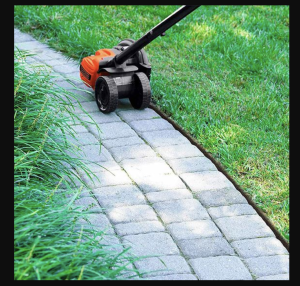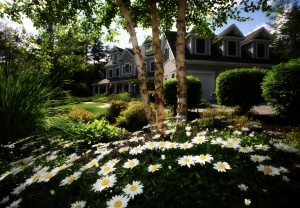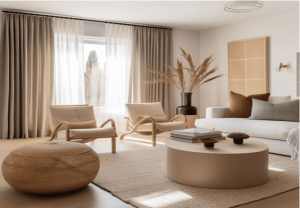Crepe myrtles come in a variety of sizes, but if you have ample space, we highly recommend going for the grandeur of large crepe myrtle trees. These majestic beauties can create a captivating impact in your garden with their impressive size. During summer, they burst forth with vibrant colors, gracefully arching over walkways and providing cooling shade. As fall sets in, their foliage transforms into warm tones of orange, red, or yellow, adding a touch of autumnal charm. Even in winter, these trees continue to impress with their stately trunks, adorned with elegant peeling bark that reveals rich shades of tan, cinnamon, or chocolate brown. To maximize the impact, it’s crucial to select a variety that suits your available space. While dwarf and semi-dwarf crepe myrtles are suitable for smaller areas, large and medium-sized ones thrive when given sufficient space and full sun. Here, we present a selection of large and medium crepe myrtle varieties that are ideal for your Southern garden.
Large Crepe Myrtles
Several common crepe myrtle varieties, scientifically known as Lagerstroemia Indica, can reach heights of 25 to 40 feet. These tall trees are perfect for creating allees, acting as buffer or privacy walls, framing multistoried houses, or shading your favorite sitting area. If you prefer a shorter crepe myrtle, opt for a variety that naturally grows shorter instead of pruning these magnificent trees every year to control their size. Planting these large crepe myrtles will undoubtedly make a bold impact due to their imposing stature. The only necessary pruning is to remove spent flowers or raise the flowering canopy by trimming lower horizontal branches, which should be done in late winter.
1. Biloxi
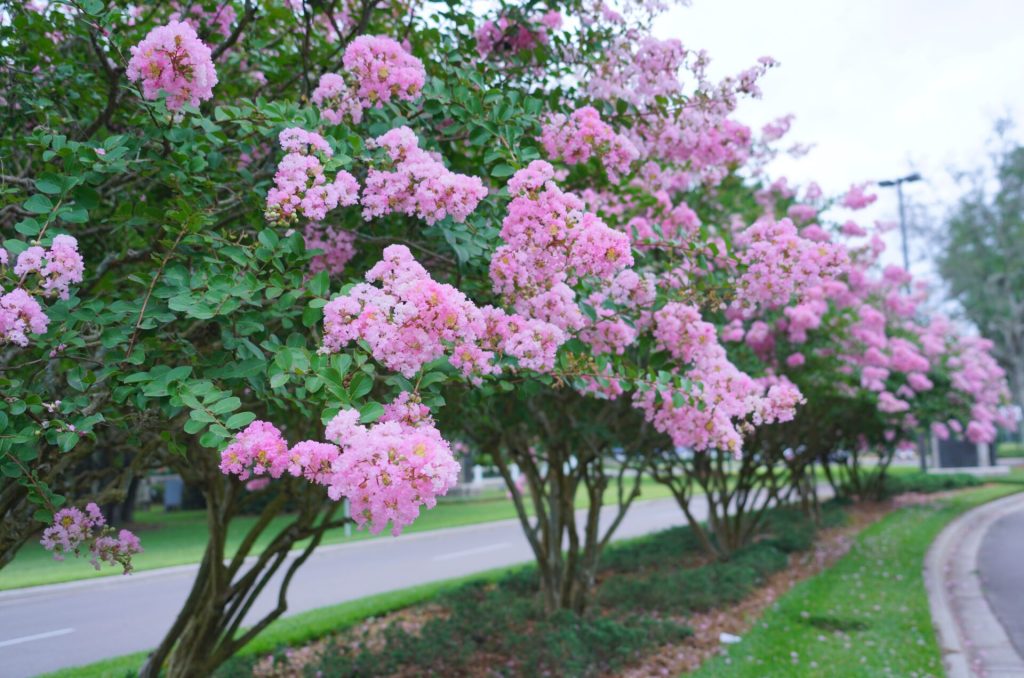
With an upright vase-shaped form, Biloxi crepe myrtle showcases pale pink blooms and exhibits orange-red fall foliage. This variety boasts high mildew resistance, making it ideal for urban areas. It is drought-tolerant, has a long bloom season, and can be trained as a standard tree or grown with multiple trunks. During winter, its trunks become a fabulous sight, displaying mottled tan and brown from peeling bark.
– Height: 20-25 feet
– Width: 15-25 feet
– Hardiness Zone: 7-9A
2. Natchez
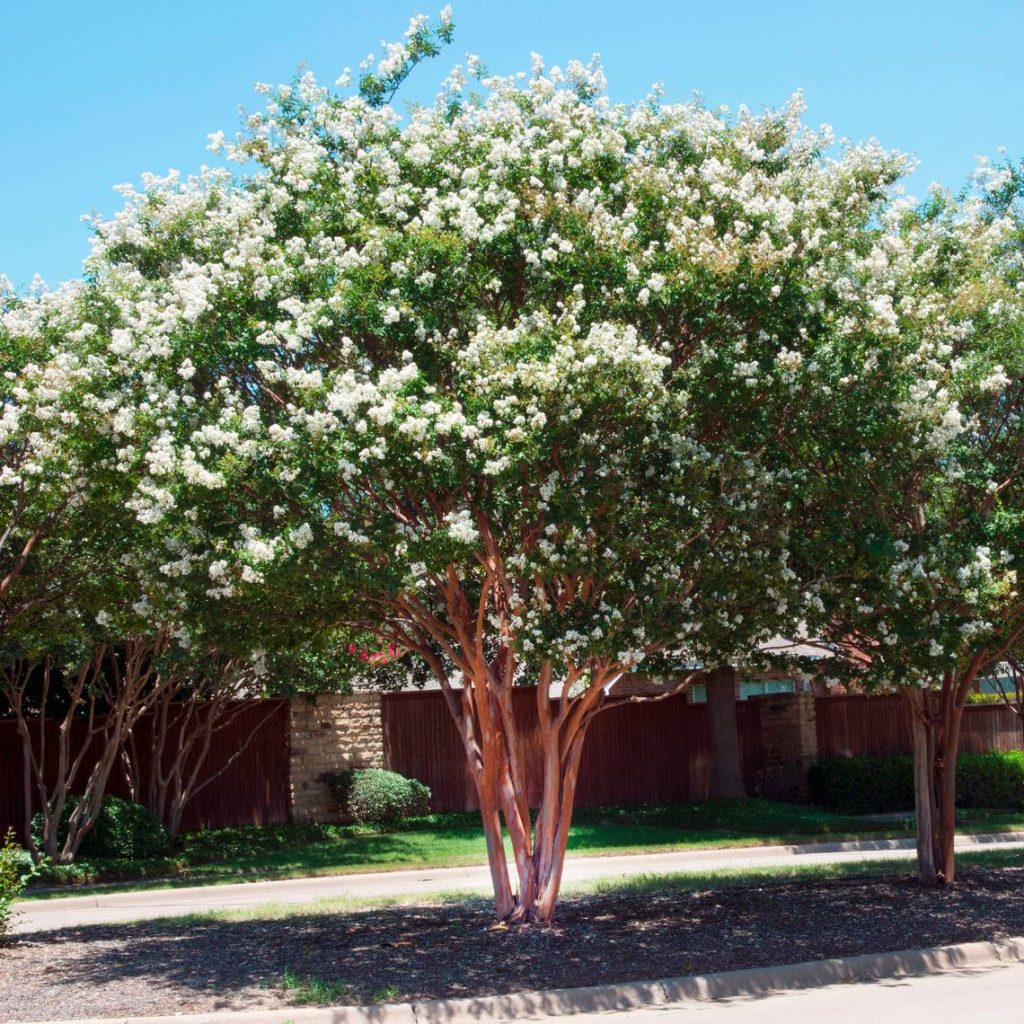
Natchez is a broad and tall tree adorned with white, frilly blooms and red-orange foliage. It boasts high mildew resistance, captivating winter bark, and weeping branches. This variety also has a long blooming season.
– Height: 25-30 feet
– Width: 15-20 feet
– Hardiness Zone: 6-9B
3. Dynamite
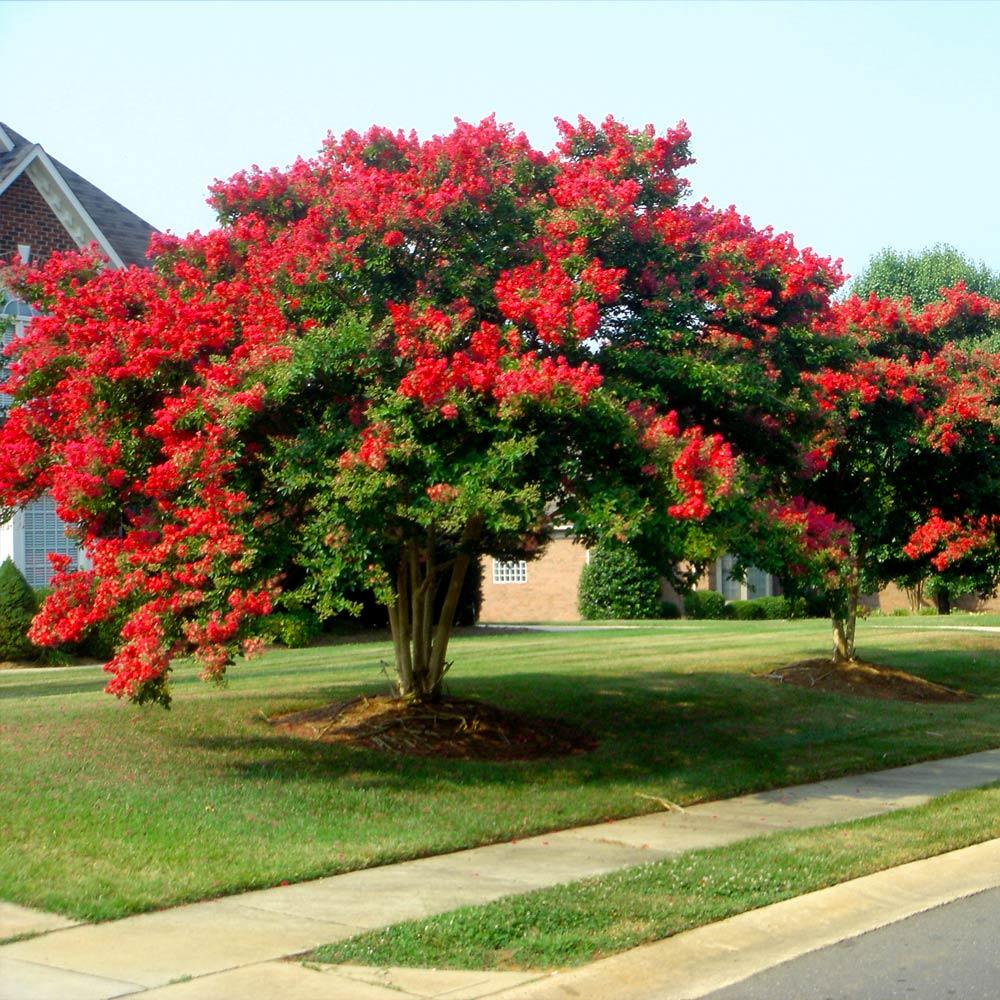
Dynamite crepe myrtle is an upright, columnar tree that flaunts fiery red flowers and orange-red foliage. It is an excellent choice when a narrower crepe myrtle is needed. This variety also showcases beautiful winter bark.
– Height: 20-25 feet
– Width: 10-15 feet
– Hardiness Zone: 6-10
4. Muskogee

Muskogee is a broad and tall tree featuring light lavender flowers and red-orange foliage. It has a more rounded shape, attractive bark, and high mildew resistance.
– Height: 25 feet
– Width: 15 feet
– Hardiness Zone: 6-9
5. Tuscarora
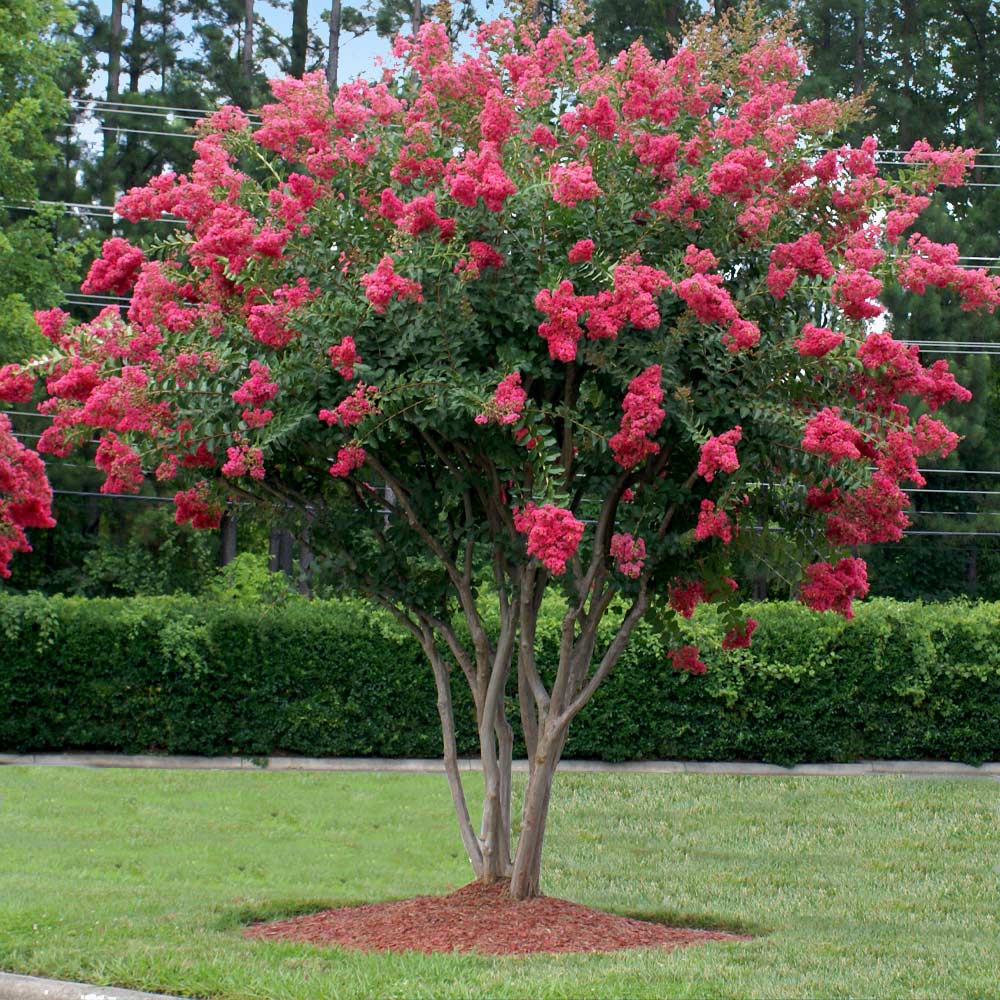
This broad vase-shaped tree displays coral-pink flowers and orange fall foliage. Its foliage emerges in a coppery-bronze hue in spring, and it offers high mildew resistance. Additionally, Tuscarora showcases beautiful light cinnamon winter bark.
– Height: 20-25 feet
– Width: 15-20 feet
– Hardiness Zone: 6-9
6. Arapaho
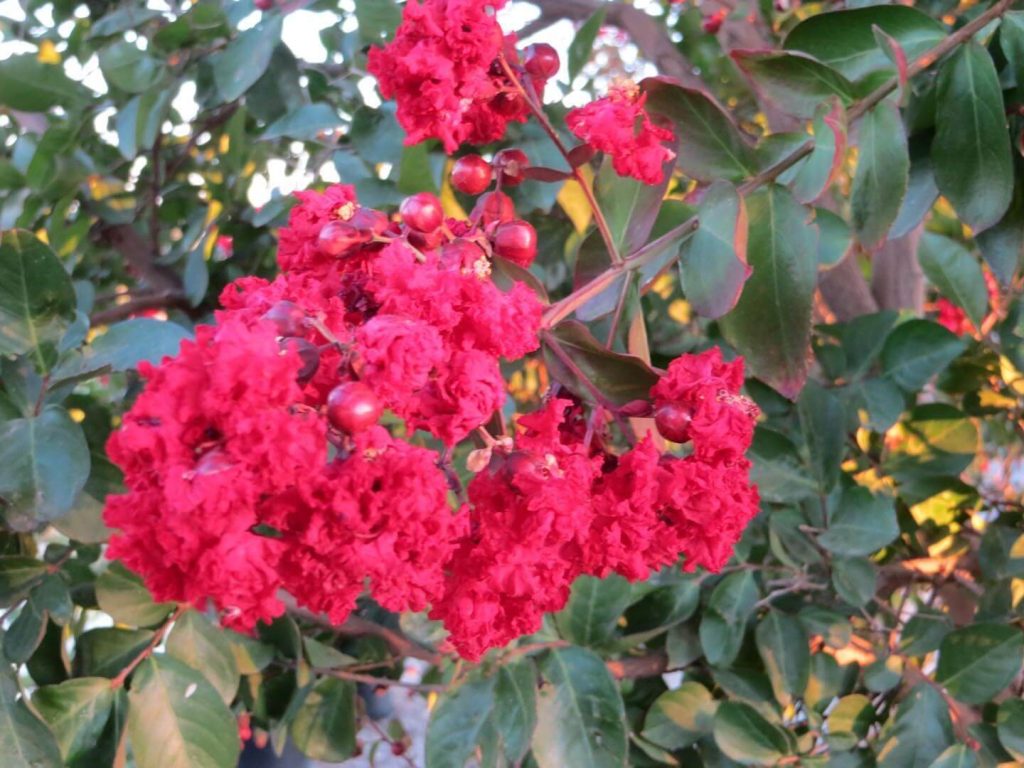
Arapaho is an upright tree adorned with red flowers and maroon-red fall foliage. It possesses good mildew resistance and features lovely winter trunks with peeling bark, making it a great choice for screening.
– Height: 20-25 feet
– Width: 10-15 feet
– Hardiness Zone: 6-10
7. Miami
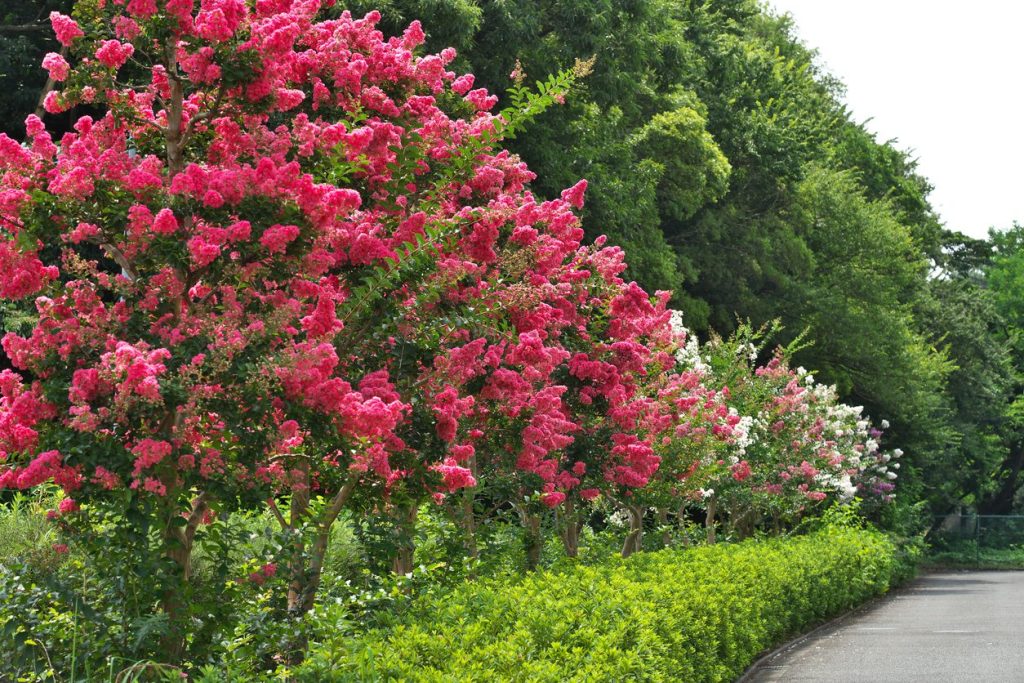
Miami crepe myrtle is an upright tree that boasts dark pink flowers and russet-red to orange fall foliage. It exhibits high mildew resistance and showcases chestnut-brown bark.
– Height: 20-25 feet
– Width: 15 feet
– Hardiness Zone: 6-9
Medium-Size Crepe Myrtles
Medium-size crepe myrtles are perfect for those seeking trees that reach heights of 12 to 20 feet. These trees can be used as large shrubs to create privacy hedges or grown in spacious planters. When planting crepe myrtle hedges or mass plantings, ensure proper spacing to allow for good air circulation and prevent powdery mildew. Similar to their larger counterparts, prune only spent flowers and damaged branches. Medium-size crepe myrtles introduce dark burgundy foliage throughout the summer in varieties like Delta Breeze, Thunderstruck, and Black Diamond.
1. Catawba
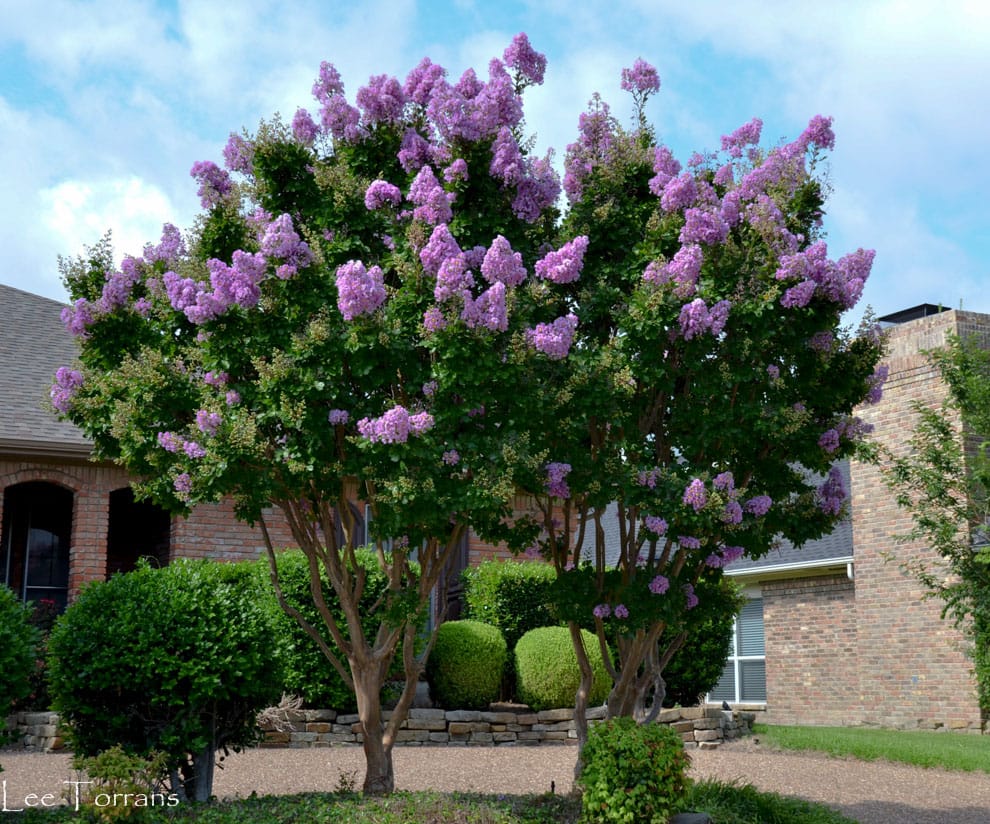
Catawba is an upright, small tree that showcases violet-purple blooms and scarlet fall foliage. This dense, multi-stemmed shrub provides privacy even during the winter. It is low maintenance, deer resistant, and a fast grower.
– Height: 12-15 feet
– Width: 10 feet
– Hardiness Zone: 7-9
2. Osage
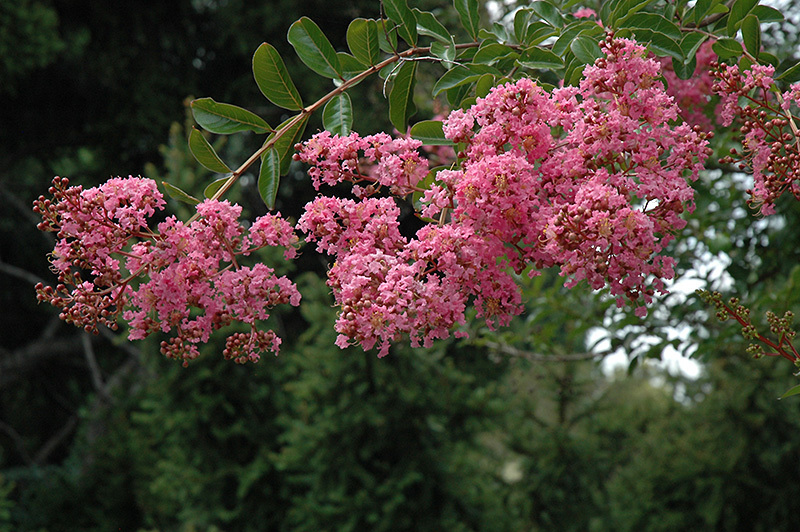
Osage crepe myrtle is an arching, open small tree with vivid pink flowers and beautiful mottled chestnut-brown bark. It exhibits red fall color and brings cool shade with its dense rounded form. This variety is also a fast grower and can live for 50 years or more.
– Height: 10-15 feet
– Width: 15 feet
– Hardiness Zone: 6-9
3. Lipan
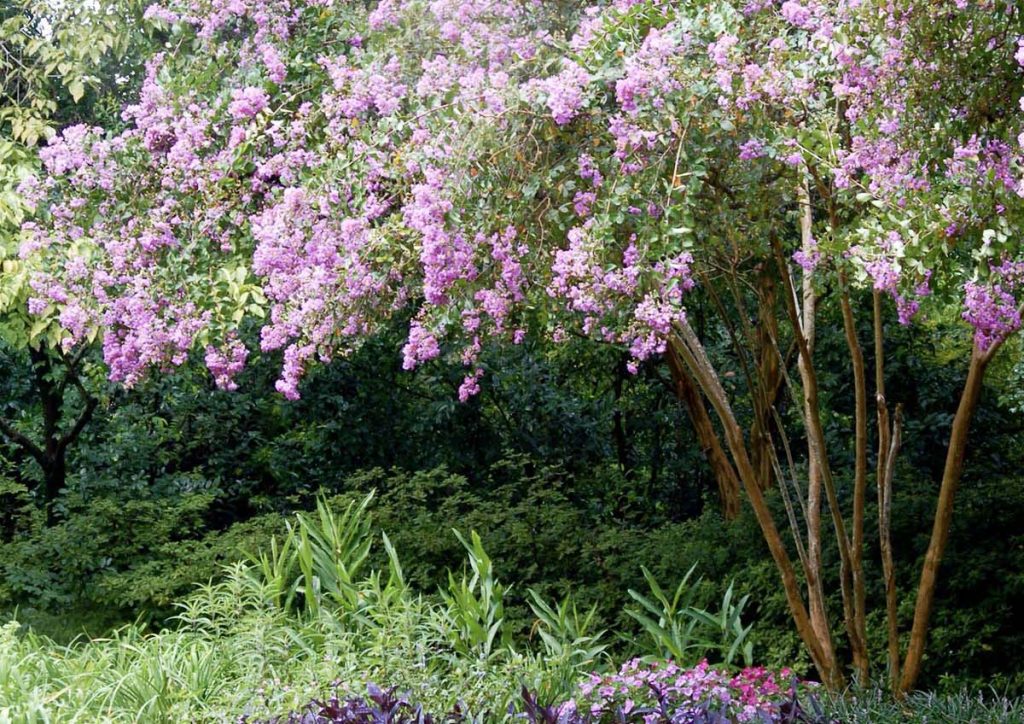
Lipan is a broad upright and spreading tree with medium lavender flowers and orange fall color. This U.S. National Arboretum Gold Medal award-winning hybrid possesses high mildew resistance and presents a stunning mosaic of color in its winter bark display.
– Height: 13-20 feet
– Width: 6-10 feet
– Hardiness Zone: 6b-10
4. Centennial Spirit
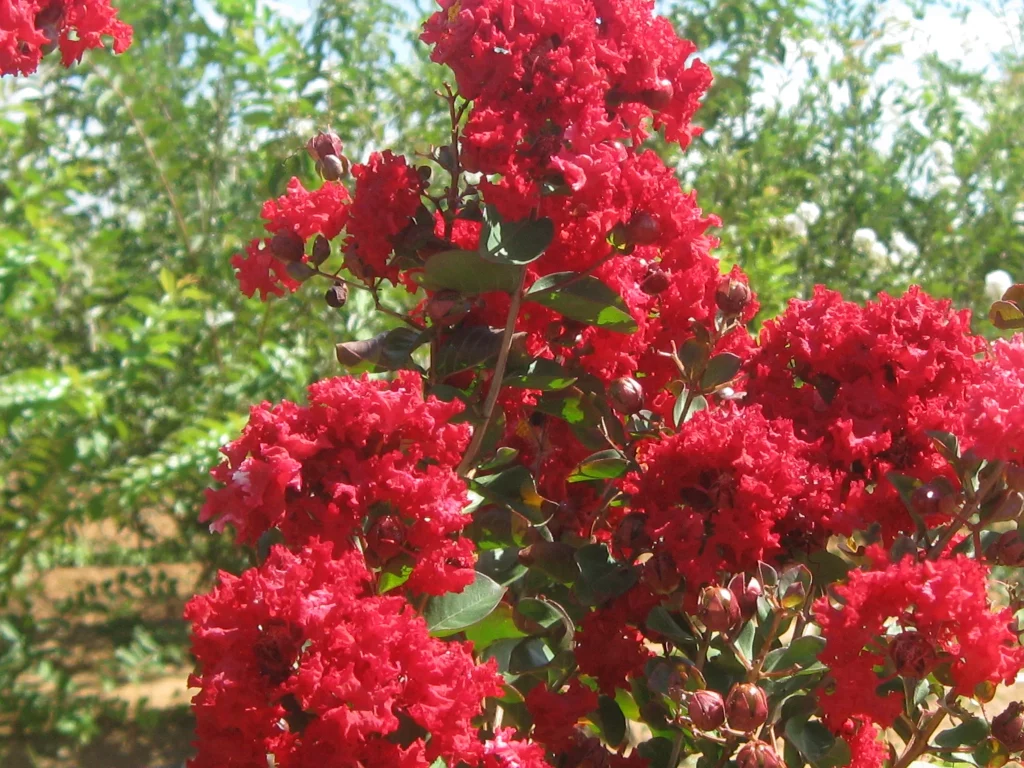
Centennial Spirit is a strong rounded tree featuring rose-red flowers and red-orange fall color. Its grey bark peels off to reveal cream-colored bark, adding visual interest. This variety has a moderate growth rate.
– Height: 10-20 feet
– Width: 15 feet
– Hardiness Zone: 6b-9
5. Burgundy Cotton
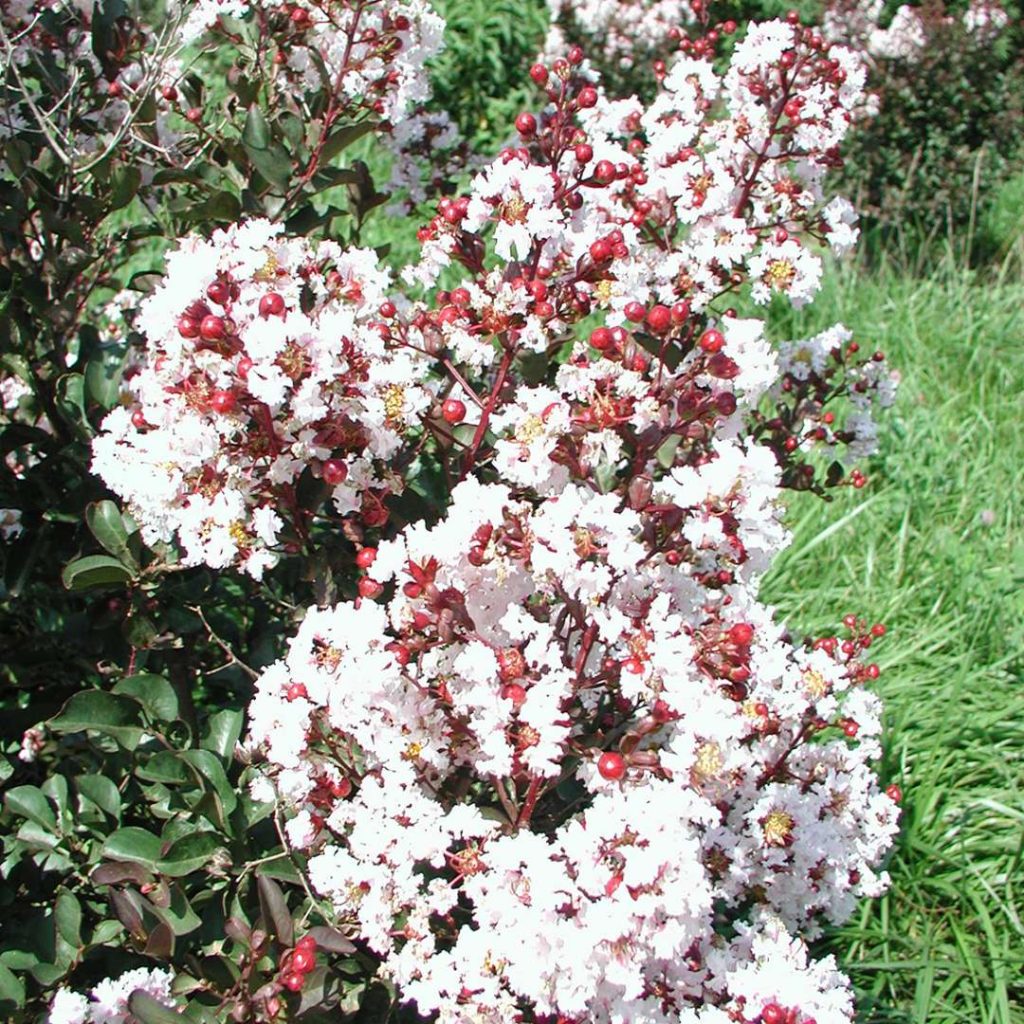
Burgundy Cotton crepe myrtle is an upright rounded tree with large clusters of white flowers opening from burgundy flower buds. It blooms on new wood and is perfect as a specimen or screening plant. This variety’s blooming season extends from early summer to early fall.
– Height: 10-13 feet
– Width: 10-13 feet
– Hardiness Zone: 6b-10
Frequently Asked Questions
Q: What crepe myrtle is the fastest growing?
A: The ‘Basham’s Party Pink’ crepe my
rtle is known for its rapid growth, reaching around 12 to 15 feet per year. Another fast-growing variety is ‘Red Rocket,’ which can grow between three to eight feet annually.
Q: Can you change the color of your crepe myrtle?
A: No, it is not possible to change the color of crepe myrtle blooms by altering the soil’s pH or through specific care methods, as is the case with hydrangeas. It is important to determine the color of the blooms before planting to ensure you select a suitable variety that meets your preferences.
Elevate Your Garden with the Right Maintenance Services!
Don’t miss the chance to elevate your garden’s beauty!
Contact us today to bring a stunning site to your outdoors!





